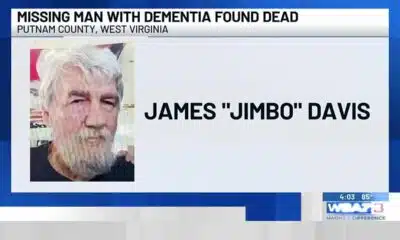Kaiser Health News
Why Even Public Health Experts Have Limited Insight Into Stopping Gun Violence in America
Christine Spolar
Wed, 06 Mar 2024 10:00:00 +0000
Gun violence has exploded across the U.S. in recent years — from mass shootings at concerts and supermarkets to school fights settled with a bullet after the last bell.
Nearly every day of 2024 so far has brought more violence. On Feb. 14, gunfire broke out at the Super Bowl parade in Kansas City, killing one woman and injuring 22 others. Most events draw little attention — while the injuries and toll pile up.
Gun violence is among America’s most deadly and costly public health crises. But unlike other big killers — diseases like cancer and HIV or dangers like automobile crashes and cigarettes — sparse federal money goes to studying gun violence or preventing it.
That’s because of a one-sentence amendment tucked into the 1996 congressional budget bill: “None of the funds made available for injury prevention and control at the Centers for Disease Control and Prevention may be used to advocate or promote gun control.”
Its author was Jay Dickey, an Arkansas Republican who called himself the “point man” for the National Rifle Association on Capitol Hill. And for nearly 25 years the amendment was perceived as a threat and all but paralyzed the CDC’s support and study of gun violence.
Even so, a small group of academics have toiled to document how gun violence courses through American communities with vast and tragic outcomes. Their research provides some light as officials and communities develop policies mostly in the dark. It has also inspired a fresh generation of researchers to enter the field — people who grew up with mass shootings and are now determined to investigate harm from firearms. There is momentum now, in a time of rising gun injury and death, to know more.
The reality is stark:
Gun sales reached record levels in 2019 and 2020. Shootings soared. In 2021, for the second year, more people died from gun incidents — 48,830 — than in any year on record, according to a Johns Hopkins University analysis of CDC data. Guns became the leading cause of death for children and teens. Suicides accounted for more than half of those deaths, and homicides were linked to 4 in 10.
Black people are nearly 14 times as likely to die from firearm violence as white people — and guns were responsible for half of all deaths of Black teens ages 15 to 19 in 2021, the data showed.
Harvard research published in JAMA in 2022 estimated gun injuries translate into economic losses of $557 billion annually, or 2.6% of the U.S. gross domestic product.
With gun violence touching nearly every corner of the country, surveys show that Americans — whatever their political affiliation or whether they own guns or not — support policies that could reduce violence.
What Could Have Been
It is no secret that many strategies proposed today — from school metal detectors to enhanced policing, to the optimal timing and manner of safely storing guns, to restrictions on gun sales — have limited scientific ballast because of a lack of data.
It could have been otherwise.
U.S. firearm production surged in the late 1980s, flooding communities with more than 200 million weapons. In that era, Mark Rosenberg was the founding director of the CDC’s National Center for Injury Prevention and Control and his agency, over time, was pivotal in helping to fund research on gun violence and public health.
Rosenberg thought then that gun violence could go the way of car crashes. The federal government spent $200 million a year on research to redesign roadways and cars beginning in the 1970s, he said, and had seen death rates plummeted.
“We said, ‘Why can’t we do this with gun violence?’” Rosenberg said. “They figured out how to get rid of car crashes — but not cars. Why can’t we do the same thing when it comes to guns?”
The Dickey Amendment sidelined that dream.
A study published in 1993 concluded that “guns kept in the home are associated with an increase in the risk of homicide,” a finding on risk factors that prompted an uproar in conservative political circles. To newly elected representatives in the midterm “Republican Revolution” of 1994, the research was a swipe at gun rights. The NRA stepped up lobbying, and Congress passed what’s known as the Dickey Amendment in 1996.
Some Democrats, such as the influential John Dingell of Michigan (a onetime NRA board member who received the group’s “legislative achievement award”), would join the cause. Dingell proposed his own bills, detailed last summer by The New York Times.
Under heavy political pressure, the CDC ousted Rosenberg in 1999. Soon after, some CDC administrators began alerting the NRA to research before publication.
“It was clearly related to the work we were doing on gun violence prevention,” Rosenberg, now 78, said of his job loss. “It was a shock.”
Those Who Persevered
The quarter-century spending gap has left a paucity of data about the scope of gun violence’s health effects: Who is shot and why? What motivates the violence? With what guns? What are the injuries? Can suicides, on the rise from gunfire, be reduced or prevented with safeguards? Does drug and alcohol use increase the chances of harm? Could gun safeguards reduce domestic violence? Ultimately, what works and what does not to prevent shootings?
If researchers say they “lost a generation” of knowledge about gun violence, then American families lost even more, with millions of lives cut short and a legacy of trauma passed down through generations.
Imagine if cancer research had been halted in 1996 — many tumors that are now eminently treatable might still be lethal. “It’s like cancer,” said Rebecca Cunningham, vice president for research at the University of Michigan, an academic who has kept the thread of gun research going all these years. “There may be 50 kinds of cancer, and there are preventions for all of them. Firearm violence has many different routes, and it will require different kinds of science and approaches.”
Cunningham is one of a small group of like-minded researchers, from universities across the United States, who refused to let go of investigating a growing public health risk, and they pushed ahead without government funds.
Garen Wintemute has spent about $2.45 million of his money to support seminal research at the University of California-Davis. With state and private funding, he created a violence prevention program in California, a leader in firearm studies. He has documented an unprecedented increase in gun sales since 2020 — about 15 million transactions more than expected based on previous sales data.
Daniel Webster at Johns Hopkins University focused on teenagers and guns — particularly access and suicides — and found that local police who coped with gun risks daily were willing to collaborate. He secured grants, even from the CDC, with carefully phrased proposals that avoided the word “guns,” to study community violence.
At Duke University, Philip J. Cook explored the underground gun market, interviewing people incarcerated in Chicago jails and compiling pivotal social science research on how guns are bought, sold, and traded.
David Hemenway, an economist and public policy professor at Harvard, worked on the national pilot to document violent deaths — knowing most gun deaths would be recorded that way — because, he said, “if you don’t have good data, you don’t have nothin’.”
Hemenway, writing in the journal Nature in 2017, found a 30% rise in gun suicides over the preceding decade and nearly a 20% rise in gun murders from 2014 to 2015. The data was alarming and so was the lack of preventive know-how, he wrote. “The US government, at the behest of the gun lobby, limits the collection of data, prevents researchers from obtaining much of the data that are collected and severely restricts the funds available for research on guns,” he wrote. “Policymakers are essentially flying blind.”
His work helped create the most ambitious database of U.S. gun deaths today — the National Violent Death Reporting System. Funded in 1999 by private foundations, researchers were able to start understanding gun deaths by compiling data on all violent deaths from health department, police, and crime records in several states. The CDC took over the system and eventually rolled in data from all 50 states.
Still, no federal database of nonfatal gun injuries exists. So the government would record one death from the Super Bowl parade shooting, and the 22 people with injuries remain uncounted — along with many thousands of others over decades.
Philanthropy has supported research that Congress would not. The Joyce Foundation in Chicago funded the bulk of the grants, with more than $33 million since the 1990s. Arnold Ventures’ philanthropy and the Robert Wood Johnson Foundation have added millions more, as has Michael Bloomberg, the politician and media company owner. The Rand Corp., which keeps a tab of ongoing research, finds states increasingly are stepping up.
Timothy Daly, a Joyce Foundation program director, said he remembers when the field of gun harm was described by some as a “desert.” “There was no federal funding. There was slim private funding,” he said. “Young people would ask themselves: ‘Why would I go into that?’”
Research published in JAMA in 2017 found gun violence “was the least-researched” among leading causes of death. Looking at mortality rates over a decade, gun violence killed about as many people as sepsis, the data showed. If funded at the same rate, gun violence would have been expected to receive $1.4 billion in research funds. Instead, it received $22 million from across all U.S. government agencies.
There is no way to know what the firearm mortality or injury rate would be today had there been more federal support for strategies to contain it.
A Reckoning
As gun violence escalated to once unthinkable levels, Rep. Dickey came to regret his role in stanching research and became friends with Rosenberg. They wrote a pivotal Washington Post op-ed about the need for gun injury prevention studies. In 2016, they delivered a letter supporting the creation of the California Firearm Violence Research Center.
Both men, they emphasized, were NRA members and agreed on two principles: “One goal must be to protect the Second-Amendment rights of law-abiding gun owners; the other goal, to reduce gun violence.”
Dickey died in 2017, and Rosenberg has only kind words for him. “I did not blame Jay at all for what happened,” he said. The CDC was “under pressure from Congress to get rid of our gun research.”
As alarm over gun fatality statistics from diverse sectors of the nation — scientists, politicians, and law enforcement — has grown, research in the field is finally gaining a foothold.
Even Congress, noting the Dickey Amendment was not an all-out ban, appropriated $25 million for gun research in late 2019, split between the CDC — whose imperative is to research public health issues — and the National Institutes of Health. It’s a drop in the bucket compared with what was spent on car crashes, and it’s not assured. House Republicans this winter have pushed an amendment to once again cut federal funding for CDC gun research.
Still, it’s a start. With growing interest in the field, the torch has passed to the next generation of researchers.
In November, Cunningham helped organize a national conference on the prevention of firearm-related harm. More than 750 academics and professionals in public health, law, and criminal justice met in Chicago for hundreds of presentations. A similar event in 2019, the first in 20 years, drew just a few dozen presentations.
“You can feel momentum,” Cunningham said at the conference, reflecting on the research underway. “There’s a momentum to propel a whole series of evidence-based change — in the same way we have addressed other health problems.”
During a congressional hearing weeks later, Yale University School of Public Health Dean Megan L. Ranney bluntly described the rising number of gun deaths — noting the overwhelming number of suicides — as an alarm for lawmakers. “We are turning into a nation of traumatized survivors,” she said, urging their support for better data and research on risk factors.
Cassandra Crifasi, 41, was a high school sophomore when the Columbine massacre outside Littleton, Colorado, shook the country. She recently succeeded Webster, her mentor and research partner, as co-director of the Johns Hopkins Center for Gun Violence Solutions.
Crifasi has spent much of her career evaluating risk factors in gun use, including collaborative studies with Baltimore police and the city to reduce violence.
Raised in rural Washington state, Crifasi said she never considered required training in firearms an affront to the Second Amendment. She owns guns. In her family, which hunted, it was a matter of responsibility.
“We all learned to hunt. There are rules to follow. Maybe we should have everybody who wants to have a gun to do that,” she said.
Crifasi pointed to the 2018 shooting at Marjory Stoneman Douglas High in Parkland, Florida — which left 17 dead and 17 injured — as a turning point. Students and their parents took “a page out of Mothers Against Drunk Driving — showing up, testifying, being in the gallery where laws are made,” she said.
“People started to shift and started to think: This is not a third rail in politics. This is not a third rail in research,” Crifasi said.
Shani Buggs worked in corporate management before she arrived at Johns Hopkins to pursue a master’s in public health. It was summer 2012, and a gunman killed 12 moviegoers at a midnight showing of “The Dark Knight Rises” in Aurora, Colorado. The town’s pain led the national news, and “rightfully so,” Buggs said. “But I was in Baltimore, in East Baltimore, where there were shootings happening that weren’t even consistently making the local news.”
Now violence “that once was considered out of bounds, out of balance — it is more and more common,” said Buggs who recently joined the California Firearm Violence Research Center as a lead investigator.
Buggs’ research has examined anxiety and depression among youths who live in neighborhoods with gun violence — and notes that firearm suicide rates too have drastically increased among Black children and adolescents.
There is a trauma from hearing gunshots and seeing gun injuries, and daily life can be a thrum of risk in vulnerable communities, notably those largely populated by Black and Hispanic people, Buggs said. Last year, Buggs organized the Black and Brown Collective with a core group of about two dozen scientists committed to contextualizing studies on gun violence.
“The people most impacted by the gun violence we usually hear about in America look like our families,” she said of the collective.
“They are not resilient. People are just surviving,” Buggs said. “We need way more money to research and to understand and address the complexity of the problem.”
Illustration credit: Oona Tempest/KFF Health News. (Reference photos of Buggs, Cook, Crifasi, Cunningham, Daly, Hemenway, Webster: Christine Spolar for KFF Health News; Rosenberg: Getty Images; Wintemute: University of California-Davis.)
——————————
By: Christine Spolar
Title: Why Even Public Health Experts Have Limited Insight Into Stopping Gun Violence in America
Sourced From: kffhealthnews.org/news/article/gun-violence-data-public-health-experts-research-funds/
Published Date: Wed, 06 Mar 2024 10:00:00 +0000
Kaiser Health News
How To Find the Right Medical Rehab Services
Rehabilitation therapy can be a godsend after hospitalization for a stroke, a fall, an accident, a joint replacement, a severe burn, or a spinal cord injury, among other conditions. Physical, occupational, and speech therapy are offered in a variety of settings, including at hospitals, nursing homes, clinics, and at home. It’s crucial to identify a high-quality, safe option with professionals experienced in treating your condition.
What kinds of rehab therapy might I need?
Physical therapy helps patients improve their strength, stability, and movement and reduce pain, usually through targeted exercises. Some physical therapists specialize in neurological, cardiovascular, or orthopedic issues. There are also geriatric and pediatric specialists. Occupational therapy focuses on specific activities (referred to as “occupations”), often ones that require fine motor skills, like brushing teeth, cutting food with a knife, and getting dressed. Speech and language therapy help people communicate. Some patients may need respiratory therapy if they have trouble breathing or need to be weaned from a ventilator.
Will insurance cover rehab?
Medicare, health insurers, workers’ compensation, and Medicaid plans in some states cover rehab therapy, but plans may refuse to pay for certain settings and may limit the amount of therapy you receive. Some insurers may require preauthorization, and some may terminate coverage if you’re not improving. Private insurers often place annual limits on outpatient therapy. Traditional Medicare is generally the least restrictive, while private Medicare Advantage plans may monitor progress closely and limit where patients can obtain therapy.
Should I seek inpatient rehabilitation?
Patients who still need nursing or a doctor’s care but can tolerate three hours of therapy five days a week may qualify for admission to a specialized rehab hospital or to a unit within a general hospital. Patients usually need at least two of the main types of rehab therapy: physical, occupational, or speech. Stays average around 12 days.
How do I choose?
Look for a place that is skilled in treating people with your diagnosis; many inpatient hospitals list specialties on their websites. People with complex or severe medical conditions may want a rehab hospital connected to an academic medical center at the vanguard of new treatments, even if it’s a plane ride away.
“You’ll see youngish patients with these life-changing, fairly catastrophic injuries,” like spinal cord damage, travel to another state for treatment, said Cheri Blauwet, chief medical officer of Spaulding Rehabilitation in Boston, one of 15 hospitals the federal government has praised for cutting-edge work.
But there are advantages in selecting a hospital close to family and friends who can help after you are discharged. Therapists can help train at-home caregivers.
How do I find rehab hospitals?
The discharge planner or caseworker at the acute care hospital should provide options. You can search for inpatient rehabilitation facilities by location or name through Medicare’s Care Compare website. There you can see how many patients the rehab hospital has treated with your condition — the more the better. You can search by specialty through the American Medical Rehabilitation Providers Association, a trade group that lists its members.
Find out what specialized technologies a hospital has, like driving simulators — a car or truck that enable a patient to practice getting in and out of a vehicle — or a kitchen table with utensils to practice making a meal.
How can I be confident a rehab hospital is reliable?
It’s not easy: Medicare doesn’t analyze staffing levels or post on its website results of safety inspections as it does for nursing homes. You can ask your state public health agency or the hospital to provide inspection reports for the last three years. Such reports can be technical, but you should get the gist. If the report says an “immediate jeopardy” was called, that means inspectors identified safety problems that put patients in danger.
The rate of patients readmitted to a general hospital for a potentially preventable reason is a key safety measure. Overall, for-profit rehabs have higher readmission rates than nonprofits do, but there are some with lower readmission rates and some with higher ones. You may not have a nearby choice: There are fewer than 400 rehab hospitals, and most general hospitals don’t have a rehab unit.
You can find a hospital’s readmission rates under Care Compare’s quality section. Rates lower than the national average are better.
Another measure of quality is how often patients are functional enough to go home after finishing rehab rather than to a nursing home, hospital, or health care institution. That measure is called “discharge to community” and is listed under Care Compare’s quality section. Rates higher than the national average are better.
Look for reviews of the hospital on Yelp and other sites. Ask if the patient will see the same therapist most days or a rotating cast of characters. Ask if the therapists have board certifications earned after intensive training to treat a patient’s particular condition.
Visit if possible, and don’t look only at the rooms in the hospital where therapy exercises take place. Injuries often occur in the 21 hours when a patient is not in therapy, but in his or her room or another part of the building. Infections, falls, bedsores, and medication errors are risks. If possible, observe whether nurses promptly respond to call lights, seem overloaded with too many patients, or are apathetically playing on their phones. Ask current patients and their family members if they are satisfied with the care.
What if I can’t handle three hours of therapy a day?
A nursing home that provides rehab might be appropriate for patients who don’t need the supervision of a doctor but aren’t ready to go home. The facilities generally provide round-the-clock nursing care. The amount of rehab varies based on the patient. There are more than 14,500 skilled nursing facilities in the United States, 12 times as many as hospitals offering rehab, so a nursing home may be the only option near you.
You can look for them through Medicare’s Care Compare website. (Read our previous guide to finding a good, well-staffed home to know how to assess the overall staffing.)
What if patients are too frail even for a nursing home?
They might need a long-term care hospital. Those specialize in patients who are in comas, on ventilators, and have acute medical conditions that require the presence of a physician. Patients stay at least four weeks, and some are there for months. Care Compare helps you search. There are fewer than 350 such hospitals.
I’m strong enough to go home. How do I receive therapy?
Many rehab hospitals offer outpatient therapy. You also can go to a clinic, or a therapist can come to you. You can hire a home health agency or find a therapist who takes your insurance and makes house calls. Your doctor or hospital may give you referrals. On Care Compare, home health agencies list whether they offer physical, occupational, or speech therapy. You can search for board-certified therapists on the American Physical Therapy Association’s website.
While undergoing rehab, patients sometimes move from hospital to nursing facility to home, often at the insistence of their insurers. Alice Bell, a senior specialist at the APTA, said patients should try to limit the number of transitions, for their own safety.
“Every time a patient moves from one setting to another,” she said, “they’re in a higher risk zone.”
KFF Health News is a national newsroom that produces in-depth journalism about health issues and is one of the core operating programs at KFF—an independent source of health policy research, polling, and journalism. Learn more about KFF.
USE OUR CONTENT
This story can be republished for free (details).
KFF Health News is a national newsroom that produces in-depth journalism about health issues and is one of the core operating programs at KFF—an independent source of health policy research, polling, and journalism. Learn more about KFF.
Subscribe to KFF Health News’ free Morning Briefing.
This article first appeared on KFF Health News and is republished here under a Creative Commons license.
The post How To Find the Right Medical Rehab Services appeared first on kffhealthnews.org
Note: The following A.I. based commentary is not part of the original article, reproduced above, but is offered in the hopes that it will promote greater media literacy and critical thinking, by making any potential bias more visible to the reader –Staff Editor.
Political Bias Rating: Centrist
This article from KFF Health News provides a comprehensive, fact-based guide to rehabilitation therapy options and how to navigate insurance, care settings, and provider quality. It avoids ideological framing and presents information in a neutral, practical tone aimed at helping consumers make informed medical decisions. While it touches on Medicare and private insurance policies, it does so without political commentary or value judgments, and no partisan viewpoints or advocacy positions are evident. The focus remains on patient care, safety, and informed choice, supporting a nonpartisan, service-oriented approach to health reporting.
Kaiser Health News
States Brace for Reversal of Obamacare Coverage Gains Under Trump’s Budget Bill
Shorter enrollment periods. More paperwork. Higher premiums. The sweeping tax and spending bill pushed by President Donald Trump includes provisions that would not only reshape people’s experience with the Affordable Care Act but, according to some policy analysts, also sharply undermine the gains in health insurance coverage associated with it.
The moves affect consumers and have particular resonance for the 19 states (plus Washington, D.C.) that run their own ACA exchanges.
Many of those states fear that the additional red tape — especially requirements that would end automatic reenrollment — would have an outsize impact on their policyholders. That’s because a greater percentage of people in those states use those rollovers versus shopping around each year, which is more commonly done by people in states that use the federal healthcare.gov marketplace.
“The federal marketplace always had a message of, ‘Come back in and shop,’ while the state-based markets, on average, have a message of, ‘Hey, here’s what you’re going to have next year, here’s what it will cost; if you like it, you don’t have to do anything,’” said Ellen Montz, who oversaw the federal ACA marketplace under the Biden administration as deputy administrator and director at the Center for Consumer Information and Insurance Oversight. She is now a managing director with the Manatt Health consulting group.
Millions — perhaps up to half of enrollees in some states — may lose or drop coverage as a result of that and other changes in the legislation combined with a new rule from the Trump administration and the likely expiration at year’s end of enhanced premium subsidies put in place during the covid-19 pandemic. Without an extension of those subsidies, which have been an important driver of Obamacare enrollment in recent years, premiums are expected to rise 75% on average next year. That’s starting to happen already, based on some early state rate requests for next year, which are hitting double digits.
“We estimate a minimum 30% enrollment loss, and, in the worst-case scenario, a 50% loss,” said Devon Trolley, executive director of Pennie, the ACA marketplace in Pennsylvania, which had 496,661 enrollees this year, a record.
Drops of that magnitude nationally, coupled with the expected loss of Medicaid coverage for millions more people under the legislation Trump calls the “One Big Beautiful Bill,” could undo inroads made in the nation’s uninsured rate, which dropped by about half from the time most of the ACA’s provisions went into effect in 2014, when it hovered around 14% to 15% of the population, to just over 8%, according to the most recent data.
Premiums would rise along with the uninsured rate, because older or sicker policyholders are more likely to try to jump enrollment hurdles, while those who rarely use coverage — and are thus less expensive — would not.
After a dramatic all-night session, House Republicans passed the bill, meeting the president’s July 4 deadline. Trump is expected to sign the measure on Independence Day. It would increase the federal deficit by trillions of dollars and cut spending on a variety of programs, including Medicaid and nutrition assistance, to partly offset the cost of extending tax cuts put in place during the first Trump administration.
The administration and its supporters say the GOP-backed changes to the ACA are needed to combat fraud. Democrats and ACA supporters see this effort as the latest in a long history of Republican efforts to weaken or repeal Obamacare. Among other things, the legislation would end several changes put in place by the Biden administration that were credited with making it easier to sign up, such as lengthening the annual open enrollment period and launching a special program for very low-income people that essentially allows them to sign up year-round.
In addition, automatic reenrollment, used by more than 10 million people for 2025 ACA coverage, would end in the 2028 sign-up season. Instead, consumers would have to update their information, starting in August each year, before the close of open enrollment, which would end Dec. 15, a month earlier than currently.
That’s a key change to combat rising enrollment fraud, said Brian Blase, president of the conservative Paragon Health Institute, because it gets at what he calls the Biden era’s “lax verification requirements.”
He blames automatic reenrollment, coupled with the availability of zero-premium plans for people with lower incomes that qualify them for large subsidies, for a sharp uptick in complaints from insurers, consumers, and brokers about fraudulent enrollments in 2023 and 2024. Those complaints centered on consumers’ being enrolled in an ACA plan, or switched from one to another, without authorization, often by commission-seeking brokers.
In testimony to Congress on June 25, Blase wrote that “this simple step will close a massive loophole and significantly reduce improper enrollment and spending.”
States that run their own marketplaces, however, saw few, if any, such problems, which were confined mainly to the 31 states using the federal healthcare.gov.
The state-run marketplaces credit their additional security measures and tighter control over broker access than healthcare.gov for the relative lack of problems.
“If you look at California and the other states that have expanded their Medicaid programs, you don’t see that kind of fraud problem,” said Jessica Altman, executive director of Covered California, the state’s Obamacare marketplace. “I don’t have a single case of a consumer calling Covered California saying, ‘I was enrolled without consent.’”
Such rollovers are common with other forms of health insurance, such as job-based coverage.
“By requiring everyone to come back in and provide additional information, and the fact that they can’t get a tax credit until they take this step, it is essentially making marketplace coverage the most difficult coverage to enroll in,” said Trolley at Pennie, 65% of whose policyholders were automatically reenrolled this year, according to KFF data. KFF is a health information nonprofit that includes KFF Health News.
Federal data shows about 22% of federal sign-ups in 2024 were automatic-reenrollments, versus 58% in state-based plans. Besides Pennsylvania, the states that saw such sign-ups for more than 60% of enrollees include California, New York, Georgia, New Jersey, and Virginia, according to KFF.
States do check income and other eligibility information for all enrollees — including those being automatically renewed, those signing up for the first time, and those enrolling outside the normal open enrollment period because they’ve experienced a loss of coverage or other life event or meet the rules for the low-income enrollment period.
“We have access to many data sources on the back end that we ping, to make sure nothing has changed. Most people sail through and are able to stay covered without taking any proactive step,” Altman said.
If flagged for mismatched data, applicants are asked for additional information. Under current law, “we have 90 days for them to have a tax credit while they submit paperwork,” Altman said.
That would change under the tax and spending plan before Congress, ending presumptive eligibility while a person submits the information.
A white paper written for Capital Policy Analytics, a Washington-based consultancy that specializes in economic analysis, concluded there appears to be little upside to the changes.
While “tighter verification can curb improper enrollments,” the additional paperwork, along with the expiration of higher premiums from the enhanced tax subsidies, “would push four to six million eligible people out of Marketplace plans, trading limited fraud savings for a surge in uninsurance,” wrote free market economists Ike Brannon and Anthony LoSasso.
“Insurers would be left with a smaller, sicker risk pool and heightened pricing uncertainty, making further premium increases and selective market exits [by insurers] likely,” they wrote.
KFF Health News is a national newsroom that produces in-depth journalism about health issues and is one of the core operating programs at KFF—an independent source of health policy research, polling, and journalism. Learn more about KFF.
USE OUR CONTENT
This story can be republished for free (details).
KFF Health News is a national newsroom that produces in-depth journalism about health issues and is one of the core operating programs at KFF—an independent source of health policy research, polling, and journalism. Learn more about KFF.
Subscribe to KFF Health News’ free Morning Briefing.
This article first appeared on KFF Health News and is republished here under a Creative Commons license.
The post States Brace for Reversal of Obamacare Coverage Gains Under Trump’s Budget Bill appeared first on kffhealthnews.org
Note: The following A.I. based commentary is not part of the original article, reproduced above, but is offered in the hopes that it will promote greater media literacy and critical thinking, by making any potential bias more visible to the reader –Staff Editor.
Political Bias Rating: Center-Left
This content presents a critique of Republican-led changes to the Affordable Care Act, emphasizing potential negative impacts such as increased premiums, reduced enrollment, and the erosion of coverage gains made under the ACA. It highlights the perspective of policy analysts and state officials who express concern over these measures, while also presenting conservative viewpoints, particularly those focusing on fraud reduction. Overall, the tone and framing lean toward protecting the ACA and its expansions, which traditionally aligns with Center-Left media analysis.
Kaiser Health News
Dual Threats From Trump and GOP Imperil Nursing Homes and Their Foreign-Born Workers
In a top-rated nursing home in Alexandria, Virginia, the Rev. Donald Goodness is cared for by nurses and aides from various parts of Africa. One of them, Jackline Conteh, a naturalized citizen and nurse assistant from Sierra Leone, bathes and helps dress him most days and vigilantly intercepts any meal headed his way that contains gluten, as Goodness has celiac disease.
“We are full of people who come from other countries,” Goodness, 92, said about Goodwin House Alexandria’s staff. Without them, the retired Episcopal priest said, “I would be, and my building would be, desolate.”
The long-term health care industry is facing a double whammy from President Donald Trump’s crackdown on immigrants and the GOP’s proposals to reduce Medicaid spending. The industry is highly dependent on foreign workers: More than 800,000 immigrants and naturalized citizens comprise 28% of direct care employees at home care agencies, nursing homes, assisted living facilities, and other long-term care companies.
But in January, the Trump administration rescinded former President Joe Biden’s 2021 policy that protected health care facilities from Immigration and Customs Enforcement raids. The administration’s broad immigration crackdown threatens to drastically reduce the number of current and future workers for the industry. “People may be here on a green card, and they are afraid ICE is going to show up,” said Katie Smith Sloan, president of LeadingAge, an association of nonprofits that care for older adults.
Existing staffing shortages and quality-of-care problems would be compounded by other policies pushed by Trump and the Republican-led Congress, according to nursing home officials, resident advocates, and academic experts. Federal spending cuts under negotiation may strip nursing homes of some of their largest revenue sources by limiting ways states leverage Medicaid money and making it harder for new nursing home residents to retroactively qualify for Medicaid. Care for 6 in 10 residents is paid for by Medicaid, the state-federal health program for poor or disabled Americans.
“We are facing the collision of two policies here that could further erode staffing in nursing homes and present health outcome challenges,” said Eric Roberts, an associate professor of internal medicine at the University of Pennsylvania.
The industry hasn’t recovered from covid-19, which killed more than 200,000 long-term care facility residents and workers and led to massive staff attrition and turnover. Nursing homes have struggled to replace licensed nurses, who can find better-paying jobs at hospitals and doctors’ offices, as well as nursing assistants, who can earn more working at big-box stores or fast-food joints. Quality issues that preceded the pandemic have expanded: The percentage of nursing homes that federal health inspectors cited for putting residents in jeopardy of immediate harm or death has risen alarmingly from 17% in 2015 to 28% in 2024.
In addition to seeking to reduce Medicaid spending, congressional Republicans have proposed shelving the biggest nursing home reform in decades: a Biden-era rule mandating minimum staffing levels that would require most of the nation’s nearly 15,000 nursing homes to hire more workers.
The long-term care industry expects demand for direct care workers to burgeon with an influx of aging baby boomers needing professional care. The Census Bureau has projected the number of people 65 and older would grow from 63 million this year to 82 million in 2050.
In an email, Vianca Rodriguez Feliciano, a spokesperson for the Department of Health and Human Services, said the agency “is committed to supporting a strong, stable long-term care workforce” and “continues to work with states and providers to ensure quality care for older adults and individuals with disabilities.” In a separate email, Tricia McLaughlin, a Department of Homeland Security spokesperson, said foreigners wanting to work as caregivers “need to do that by coming here the legal way” but did not address the effect on the long-term care workforce of deportations of classes of authorized immigrants.
Goodwin Living, a faith-based nonprofit, runs three retirement communities in northern Virginia for people who live independently, need a little assistance each day, have memory issues, or require the availability of around-the-clock nurses. It also operates a retirement community in Washington, D.C. Medicare rates Goodwin House Alexandria as one of the best-staffed nursing homes in the country. Forty percent of the organization’s 1,450 employees are foreign-born and are either seeking citizenship or are already naturalized, according to Lindsay Hutter, a Goodwin spokesperson.
“As an employer, we see they stay on with us, they have longer tenure, they are more committed to the organization,” said Rob Liebreich, Goodwin’s president and CEO.
Jackline Conteh spent much of her youth shuttling between Sierra Leone, Liberia, and Ghana to avoid wars and tribal conflicts. Her mother was killed by a stray bullet in her home country of Liberia, Conteh said. “She was sitting outside,” Conteh, 56, recalled in an interview.
Conteh was working as a nurse in a hospital in Sierra Leone in 2009 when she learned of a lottery for visas to come to the United States. She won, though she couldn’t afford to bring her husband and two children along at the time. After she got a nursing assistant certification, Goodwin hired her in 2012.
Conteh said taking care of elders is embedded in the culture of African families. When she was 9, she helped feed and dress her grandmother, a job that rotated among her and her sisters. She washed her father when he was dying of prostate cancer. Her husband joined her in the United States in 2017; she cares for him because he has heart failure.
“Nearly every one of us from Africa, we know how to care for older adults,” she said.
Her daughter is now in the United States, while her son is still in Africa. Conteh said she sends money to him, her mother-in-law, and one of her sisters.
In the nursing home where Goodness and 89 other residents live, Conteh helps with daily tasks like dressing and eating, checks residents’ skin for signs of swelling or sores, and tries to help them avoid falling or getting disoriented. Of 102 employees in the building, broken up into eight residential wings called “small houses” and a wing for memory care, at least 72 were born abroad, Hutter said.
Donald Goodness grew up in Rochester, New York, and spent 25 years as rector of The Church of the Ascension in New York City, retiring in 1997. He and his late wife moved to Alexandria to be closer to their daughter, and in 2011 they moved into independent living at the Goodwin House. In 2023 he moved into one of the skilled nursing small houses, where Conteh started caring for him.
“I have a bad leg and I can’t stand on it very much, or I’d fall over,” he said. “She’s in there at 7:30 in the morning, and she helps me bathe.” Goodness said Conteh is exacting about cleanliness and will tell the housekeepers if his room is not kept properly.
Conteh said Goodness was withdrawn when he first arrived. “He don’t want to come out, he want to eat in his room,” she said. “He don’t want to be with the other people in the dining room, so I start making friends with him.”
She showed him a photo of Sierra Leone on her phone and told him of the weather there. He told her about his work at the church and how his wife did laundry for the choir. The breakthrough, she said, came one day when he agreed to lunch with her in the dining room. Long out of his shell, Goodness now sits on the community’s resident council and enjoys distributing the mail to other residents on his floor.
“The people that work in my building become so important to us,” Goodness said.
While Trump’s 2024 election campaign focused on foreigners here without authorization, his administration has broadened to target those legally here, including refugees who fled countries beset by wars or natural disasters. This month, the Department of Homeland Security revoked the work permits for migrants and refugees from Cuba, Haiti, Nicaragua, and Venezuela who arrived under a Biden-era program.
“I’ve just spent my morning firing good, honest people because the federal government told us that we had to,” Rachel Blumberg, president of the Toby & Leon Cooperman Sinai Residences of Boca Raton, a Florida retirement community, said in a video posted on LinkedIn. “I am so sick of people saying that we are deporting people because they are criminals. Let me tell you, they are not all criminals.”
At Goodwin House, Conteh is fearful for her fellow immigrants. Foreign workers at Goodwin rarely talk about their backgrounds. “They’re scared,” she said. “Nobody trusts anybody.” Her neighbors in her apartment complex fled the U.S. in December and returned to Sierra Leone after Trump won the election, leaving their children with relatives.
“If all these people leave the United States, they go back to Africa or to their various countries, what will become of our residents?” Conteh asked. “What will become of our old people that we’re taking care of?”
KFF Health News is a national newsroom that produces in-depth journalism about health issues and is one of the core operating programs at KFF—an independent source of health policy research, polling, and journalism. Learn more about KFF.
Subscribe to KFF Health News’ free Morning Briefing.
This article first appeared on KFF Health News and is republished here under a Creative Commons license.
The post Dual Threats From Trump and GOP Imperil Nursing Homes and Their Foreign-Born Workers appeared first on kffhealthnews.org
Note: The following A.I. based commentary is not part of the original article, reproduced above, but is offered in the hopes that it will promote greater media literacy and critical thinking, by making any potential bias more visible to the reader –Staff Editor.
Political Bias Rating: Center-Left
This content primarily highlights concerns about the impact of restrictive immigration policies and Medicaid spending cuts proposed by the Trump administration and Republican lawmakers on the long-term care industry. It emphasizes the importance of immigrant workers in healthcare, the challenges that staffing shortages pose to patient care, and the potential negative effects of GOP policy proposals. The tone is critical of these policies while sympathetic toward immigrant workers and advocates for maintaining or increasing government support for healthcare funding. The framing aligns with a center-left perspective, focusing on social welfare, immigrant rights, and concern about the consequences of conservative economic and immigration policies without descending into partisan rhetoric.
-
Mississippi Today7 days ago
Brandon residents want answers, guarantees about data center
-
News from the South - Texas News Feed5 days ago
Texas high school football scores for Thursday, Sept. 4
-
Our Mississippi Home7 days ago
Southern Miss Faculty and Student Contribute to Groundbreaking NOAA-Funded Plastic Cleanup
-
News from the South - Arkansas News Feed7 days ago
Arkansas correction division to enter settlement over disability law violations
-
The Conversation7 days ago
AI is transforming weather forecasting − and that could be a game changer for farmers around the world
-
News from the South - West Virginia News Feed6 days ago
Missing man with dementia found dead
-
News from the South - South Carolina News Feed7 days ago
Trump announces that Space Command is moving from Colorado to Alabama
-
News from the South - Louisiana News Feed4 days ago
Portion of Gentilly Ridge Apartments residents return home, others remain displaced


















































